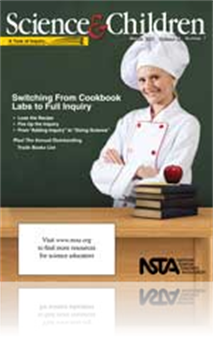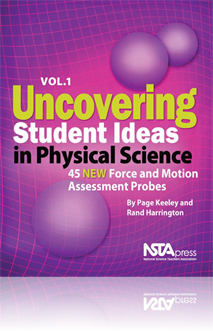All Physical Science resources
NSTA Press Book
Companion Classroom Activities for Stop Faking It! Force and Motion
Never has it been so easy for educators to learn to teach physical science with confidence. Award-winning author Bill Robertson launched his bestselling Stop Faking It! series with Force and Motion—offering elementary and middle school teachers a j...
By William C. Robertson, Ph.D.
NSTA Press Book
Hard-to-Teach Science Concepts: A Framework to Support Learners, Grades 3–5
Authors Susan Koba and Carol Mitchell introduce teachers of grades 3–5 to their conceptual framework for successful instruction of hard-to-teach science concepts. Their methodology comprises four steps: (1) engage students about their preconception...
By Susan B. Koba with Carol T. Mitchell
Journal Article
Science 101: What causes surface tension?
This column focuses on background science information for elementary teachers. In this month’s column, learn about surface tension....
NSTA Press Book
Picture-Perfect Science Lessons, Expanded 2nd Edition: Using Children's Books to Guide Inquiry, 3-6
How do you improve upon perfection? For years, new and experienced elementary school teachers alike have extolled the virtues of Picture-Perfect Science Lessons—the expertly combined appeal of children’s picture books with standards-based science...
By Karen Ansberry, Emily Morgan
NSTA Press Book
Uncovering Student Ideas in Physical Science, Volume 1: 45 New Force and Motion Assessment Probes
Nationally known science educator Page Keeley—principal author of the hugely popular, four-volume NSTA Press series Uncovering Students Ideas in Science—has teamed up with physicist and science educator Rand Harrington to write this first volume ...
By Page Keeley, Rand Harrington
Book Chapter
The purpose of this assessment probe is to comprehensively elicit students' ideas about the relationship between force and motion. The list of possible answers includes several distracters that are based on learning research; thus the probe will tell...
Book Chapter
The purpose of this assessment probe is to see whether students recognize that units of distance traveled must be measured with a measurement device from the starting point to the ending point. The probe reveals whether students take into account the...
Book Chapter
The purpose of this probe is to examine how students interpret a graphical representation of motion. The probe is designed to reveal whether students interpret a motion graph pictorially or mathematically....
Book Chapter
The purpose of this assessment probe is to elicit students' ideas about comparing motions. The probe is designed to see if students differentiate between the concept of position and the concept of speed. The probe will also help to see if students un...




